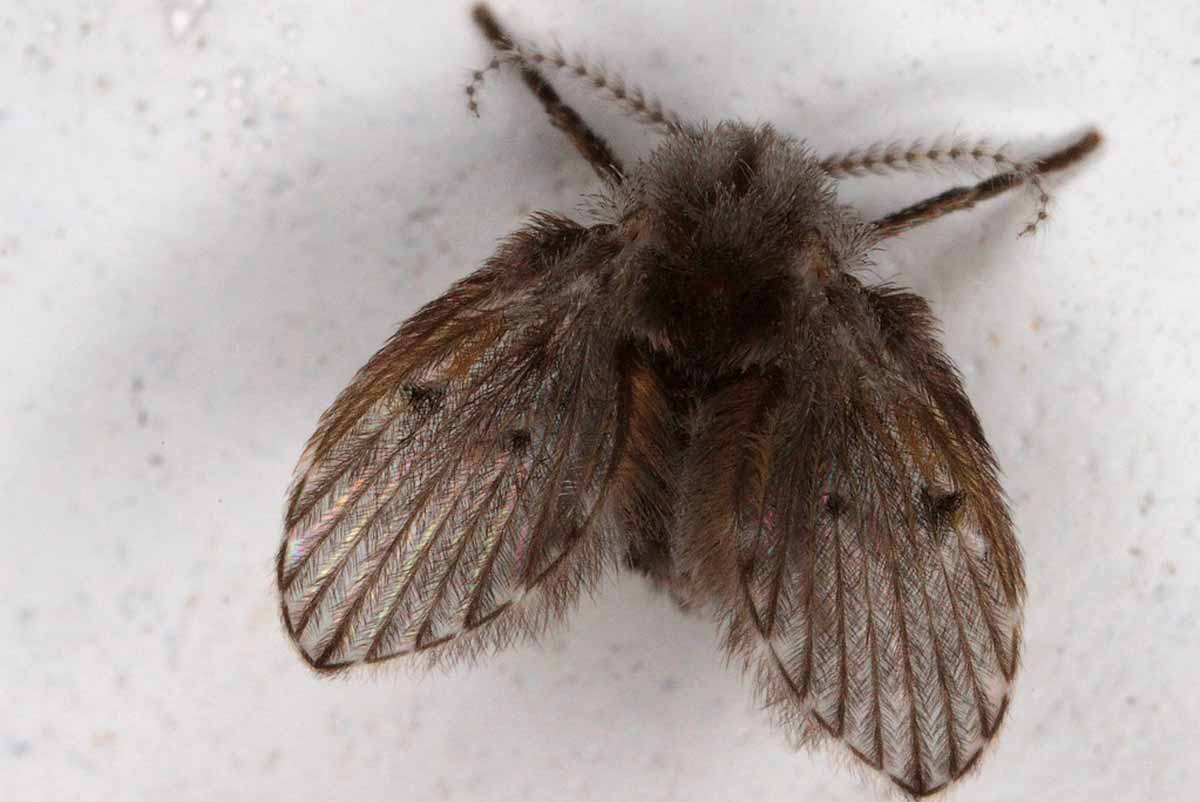
These small insects feed on the organic buildup found in drains and pipes, but their constant presence is not a sign of cleanliness
Most people have noticed the presence of tiny, fuzzy flies, resembling miniature moths, in bathrooms and kitchens.
Below, we present ten curiosities about these insects:
1)Belonging to the family Psychodidae, these small dipterans are commonly known as the bathroom fly, drain fly, or filter fly. In English, they are popularly referred to as “moth flies” due to the covering of hairs and scales that give these flies the appearance of a fuzzy moth. Their most familiar habitats include the dirty drains and pipes in our bathrooms and kitchens. The explanation for this is simple: it’s in these drains and pipes that their larvae hatch.
2)The larvae of these dipterans feed on decomposing matter and bits of organic debris. Much like many true flies, these insects can be important decomposers. In the case of bathrooms and kitchens, they feed on the organic buildup in their pipes.
3)The larval stage of bathroom flies lasts between 9 and 15 days, depending on the species, temperature, and environment. In small numbers, the larvae are sometimes considered beneficial as their strong jaws can cut through hair and sewage sludge in drains that might otherwise cause clogs. However, unless this sludge layer is completely removed, the adult fly continues to find it and lay more eggs there.
Erratic Fliers
4)Adults live for about 20 days, during which they reproduce only once, typically a few hours after emerging from their pupal casings.
5)Females lay their eggs (between 30 and 100) just above the waterline inside damp drains. Within 48 hours, these eggs hatch into the larval form.
6)Adults are typically nocturnal, though they navigate around lights and may seem attracted to light and odors. They do not fly regularly; they are often seen walking or running quickly. While they are more active at night, they can also be seen during the day or near windows, lights, or illuminated panels.
7)The family Psychodidae encompasses over 3,000 known species worldwide, and there are likely many more to be discovered and described. Members of groups like Maruina have larvae with suction cups on their belly to help them cling to rocks in streams and waterfalls. Other larvae, such as those from the Trichomyia group, resemble more worms and live in rotting wood.
Blood as Food
8)Insects from Psychodidae are also found in nature, typically in very moist places, such as wet garbage or water puddles. Their favorite habitats include compost piles, water bodies formed by terrestrial plants (called phytotelmata) like tree holes and bromeliads, manure, large bodies of water, and other damp locations where organic matter accumulates.
9)A subfamily of Psychodidae, Phlebotominae, includes several genera of blood-feeding flies. These are the primary vectors for the transmission of serious diseases: leishmaniasis (caused by the protozoan genus Leishmania), bartonellosis (caused by the bacterium Bartonella), and phlebotomus fever. In the Old World, the most common vector of leishmaniasis is species from the genus Phlebotomus, whereas in the New World, the disease is exclusively transmitted by species from the genus Lutzomyia.
10)Adult females of some species in the subfamily Sycoracinae also feed on blood, but they have a specific preference: frogs.

